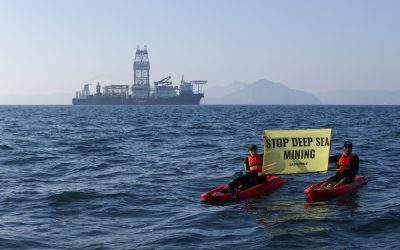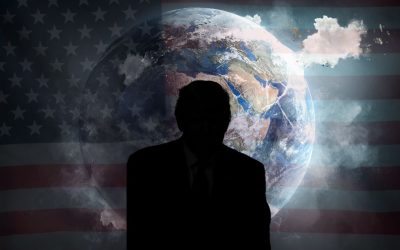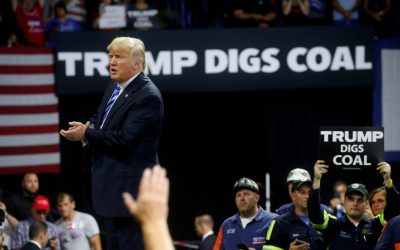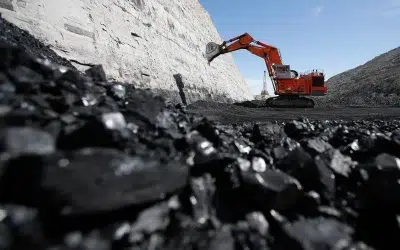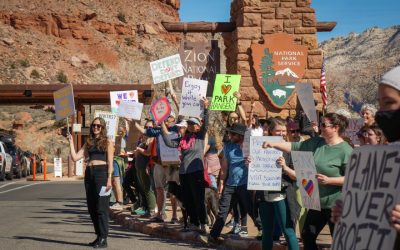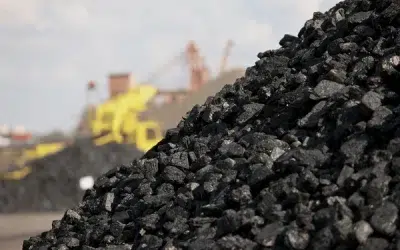In keeping with the administration’s bull-in-a-China-shop approach to the environment, foreign policy, tariffs, and just about every other domestic and international issue, the Trump team now wants to dig up the bottom of the sea.
Environment
Broad, Dramatic Changes Threaten the Environment as Trump Lifts Protections (Environment Policy Brief #184)
Dolphins in New York Harbor, whales breaching off Lower Manhattan, oysters thriving in the waters around New York City, and the Hudson River—long written off as dead—now supports fishing again. These signs of environmental recovery, while miraculous, all could slam into reverse as the latest Trump administration rollbacks take effect.
Coal Revival in the Age of Climate Emergency: Inside Trump’s New Energy Gamble (Environmental Policy Brief #183)
In a move that has startled climate scientists and energy economists alike, the Trump administration recently unveiled a sweeping new initiative aimed at reviving America’s coalindustry—a sector long regarded as both an economic relic and a climate catastrophe. The plan, a mix of subsidies, deregulation, and export promotion, represents a dramatic reversal of the Biden-era shift toward renewable energy and the most significant policy intervention in favor of coal since the early 2000s.
The Impact of New Energy Policy on the Coal Industry (Environmental Policy Brief #182)
Most economic and energy analysts define coal as having an impending obsolescence, regardless of government intervention. Forcing more years out of coal plants that are aging past their end of life will end up passing unnecessary costs onto consumers. A study by independent consulting firm Grid Strategies has found that the real cost of mining defunct coal facilities will end up costing end consumers up to $6 billion a year USD.
When our national parks get in the way of national greed (Environmental Policy Brief #212)
For the 2026 federal budget year, beginning October 1st, the White House has proposed a $1.2 billion – or 36% – cut to the National Park Service (NPS). Prior to this proposed budget cut, around 2,800 NPS employees had either been fired or resigned their positions under an early retirement buyout. Under the Biden administration, the NPS employed around 20,000 staff. The NPS manages 63 national parks and 370 other sites that include lesser-known historic sites, monuments, and national seashores.
The Kenyan Debt Problem: A Tightrope of Austerity (Foreign Policy Brief #211)
On 19 July 2025, the Kenyan activist Boniface Mwangi was arrested under suspicion of “facilitation of terrorist activities during the June 25, 2025, protests.” He was released on 21 July on a KSh 1m personal bond ($7,723). He was charged not for terrorism, but for possession of two tear gas canisters and a single blank 7.62 bullet. This is not the first time Mwangi was arrested by Kenyan authorities, nor the first time a Kenyan journalist or human rights activist was arrested by federal authorities for similar reasons.
An Energy Sector Stuck Between a Lump of Coal and a Hard Place (Environment Policy Brief #181)
Coal is not going away anytime soon; it remains the dominant source of the world’s electricity. 15% of U.S. electricity is fueled by coal. Globally, it is forecasted that carbon in the form of coal will still contribute 22% of power generation by 2040. In China and India, the reliance upon coal is significantly higher, almost double that of the U.S. and Europe. And for good reasons: it is the most economical, stable, and reliable power source.
Old Growth Forest Policy Made at the 19th Hole (Environment Policy Brief #180)
Through an Executive Order issued March 1, 2025, there is to be an expansion of American timber production that meets goals to achieve “sound forest management, reduce time to deliver timber, and decrease timber supply uncertainty.” Approximately 100 million acres, the equivalent of 60% of our national forests, are to be within earshot of a chainsaw. In so doing, the Trump administration declares this a “new era” in national forest management. Legally protected forest land and parts of old growth forest are slated be part of the expanded production.
The Growing Global Battle for Rare Earth Minerals (Environment Policy Brief #179)
Where there’s oil, there’s the United States of America. It’s an old joke, fostered by a century of U.S.-backed coups and military interventions in the name of cheap access to oil reserves. But the age of oil politics may be giving way to a new age of mineral politics.
Introducing Gulf of America – from the person who gave us Trump Tower (Environmental Policy Brief #178)
For the last 475 years, the expanse of ocean from western Florida to southern Texas has been called the “Gulf of Mexico.” English geographer Richard Hakluyt referred to the “Gulfe of Mexico” in his work of 1589. With the stroke of a pen on February 9, 2025, the President of the United States signed Executive Order 14172 and renamed the body of water “Gulf of America.” In addition to “restoring American pride,” President Trump justified the name change by referencing territorial rights over much of the area and that those waters have “long been an integral asset to our once burgeoning Nation and has remained an indelible part of America.” Trump considers the Gulf a business asset.
The End of DEI in the Federal Government: Who’s Really Affected? (Social Justice Policy Brief #172)
Diversity, Equity, and Inclusion (DEI) policies in the United States trace their roots back to the civil rights movements of the 1960s, particularly through the enactment of Affirmative Action programs.
No shortage of Canaries in our Coastlines Signaling Catastrophe (Environmental Policy Brief #178)
40% of the U.S. population line our coasts. That equates to approximately 130 million people residing in coastal counties. In addition to those who retire seaside, entire economies are integrated into the coastal industries of fishing, tourism, energy, shipbuilding, and recreation. Even a cursory glance using google maps shows how tightly clustered the built space is, all on only 10% of the total U.S. land mass. Shoreline communities have five times the population density as compared to the U.S. average.

